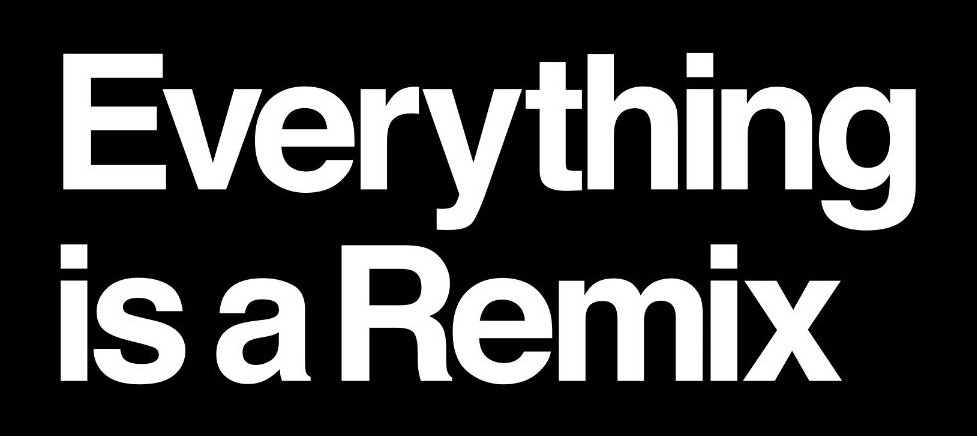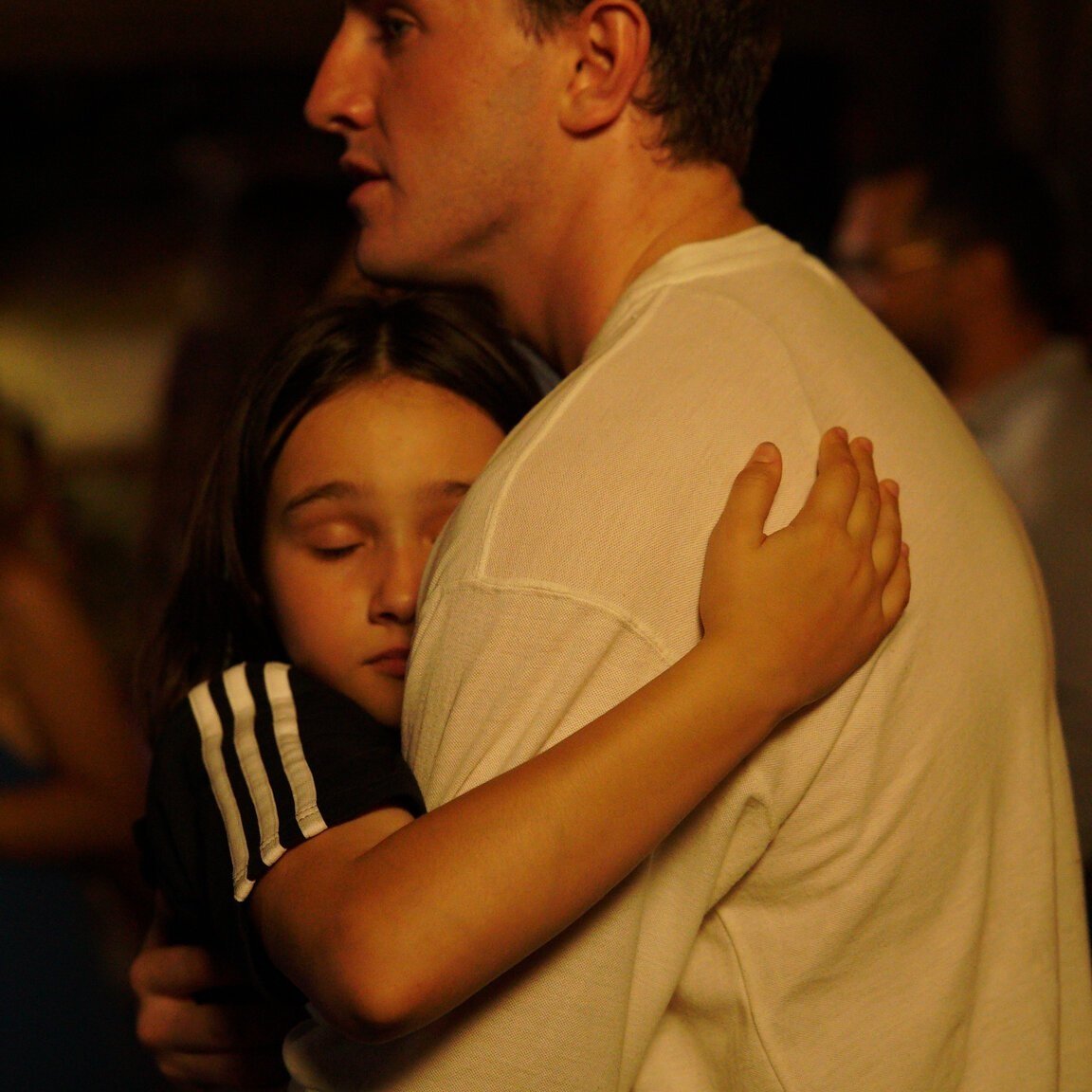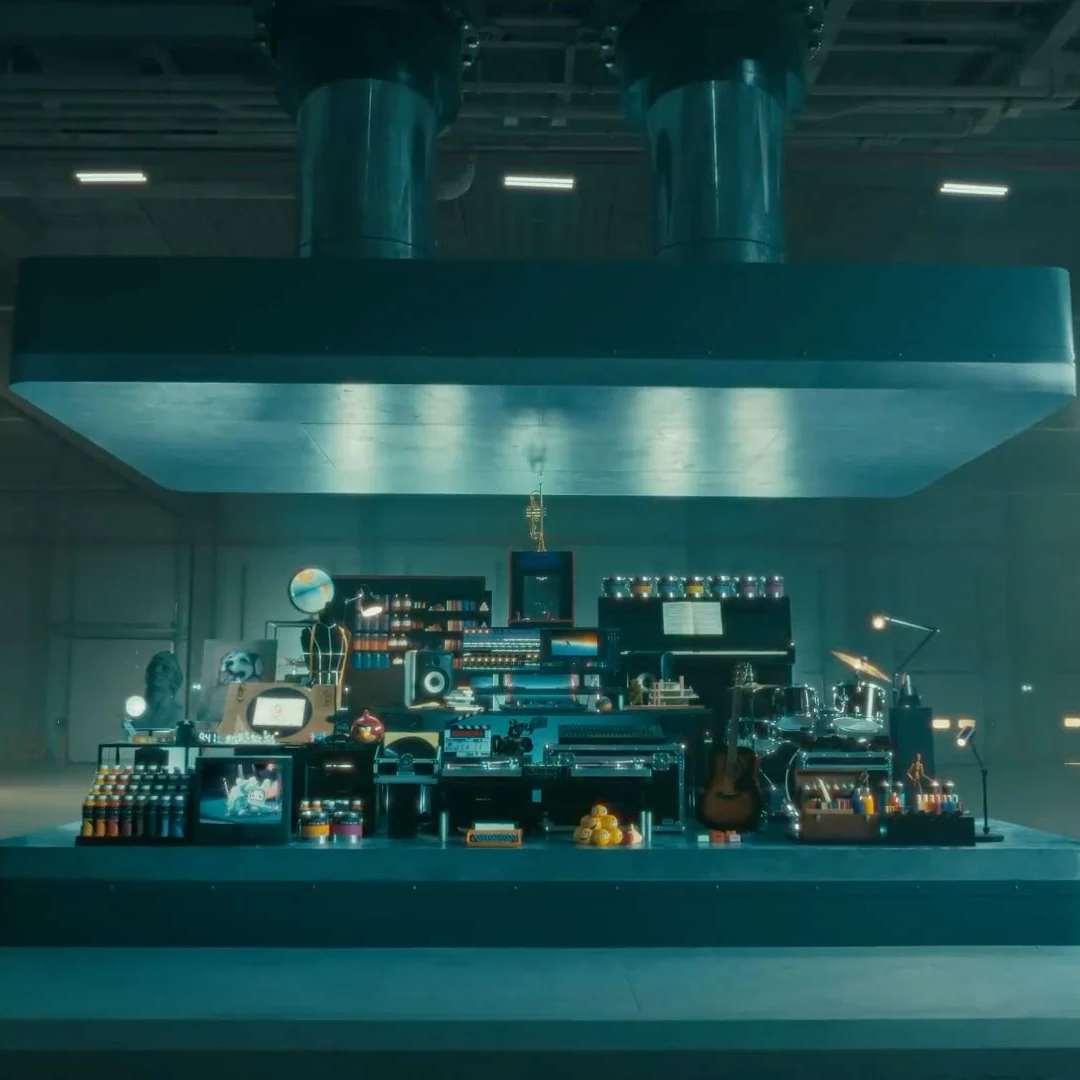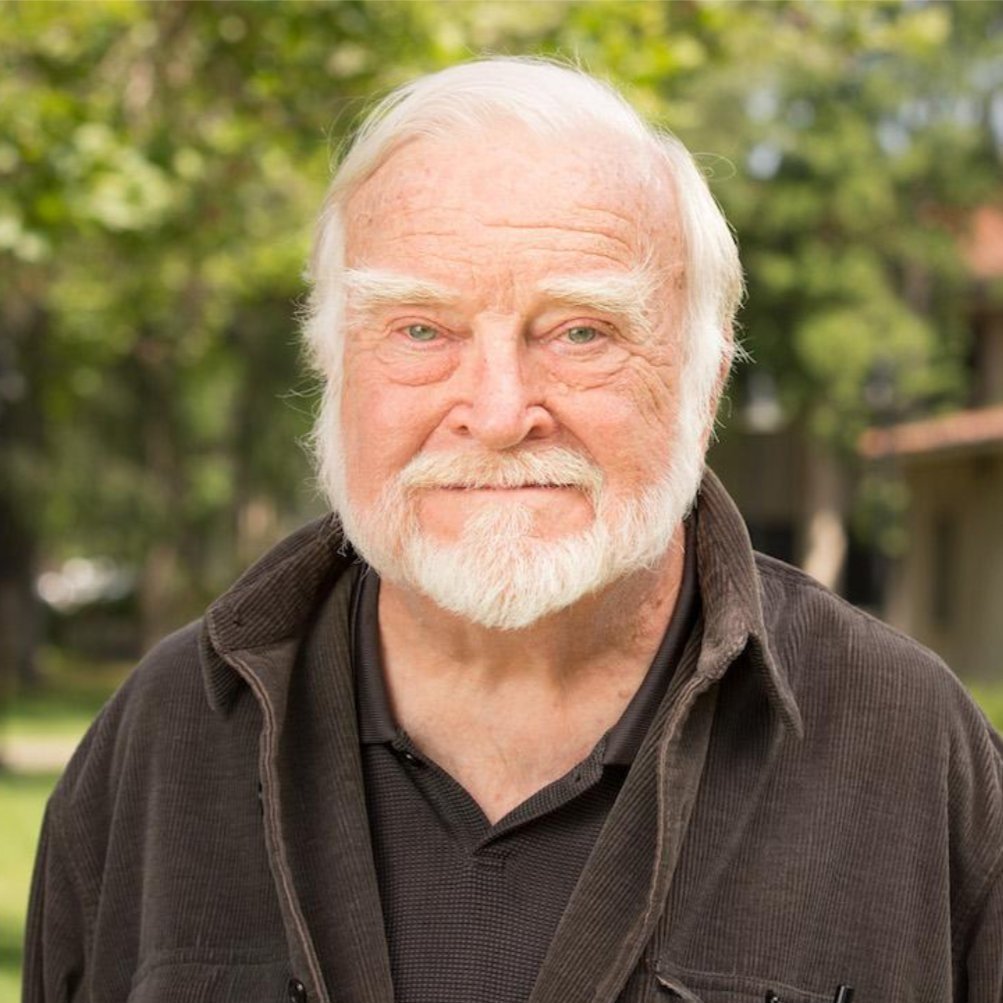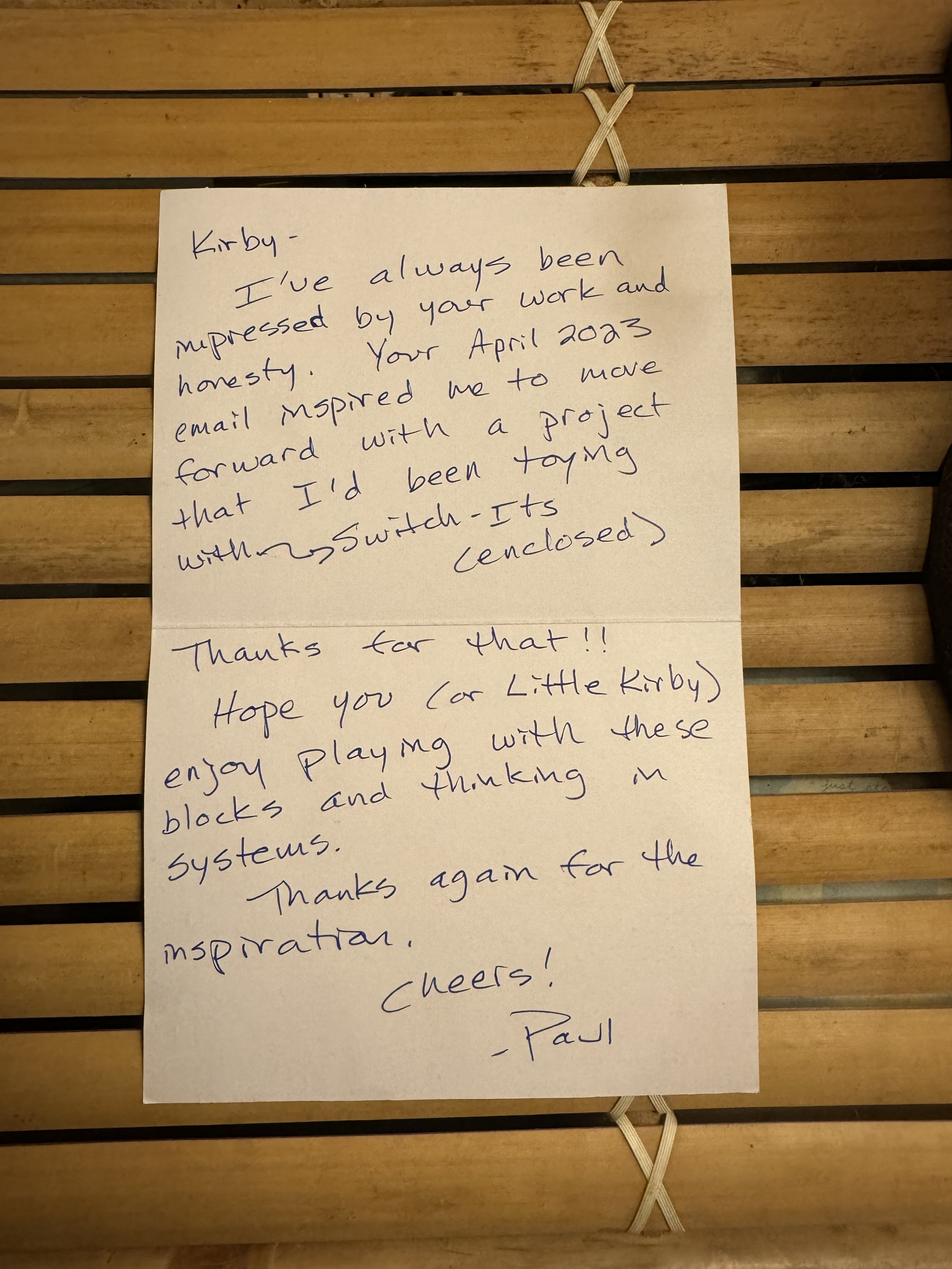Finding Bliss in Creativity
Aftersun
One of my fixations throughout life has been finding bliss in creative works. My level of interest has ranged from pure obsession to minor hobby, which is about the level I’m at here in the toddler-parent, make-money era.
But I think my moderate interest level isn’t just because of a lack of free time or even because I’m middle-aged and seen a lot. We seem creatively stagnant right now. I do a deep dive on this topic in an upcoming video for The New York Times. However, as you’ll see, there’s still lots of amazing work being done.
Here’s my question for you: where are you finding bliss in creativity? Or are you not finding much?
I’ll start. Here’s some of the amazing things I’ve experienced in recent months.
Some of these are affiliate links where we earn a small commission.
Aftersun is a masterpiece
The Make Art Not Content YouTube channel is something bold and different
The Bizarro Elaine Dance is a seriously hot remix
I thought Dune 2 was just as great as everybody else
Sidenote: I saw Alex Garland’s Civil War and it was fine. Click the link to read more. (Get more articles like that via the Everything is a Remix newsletter, another weekly newsletter that focuses exclusively on creativity.)
Overall, and very oddly, I’m finding the aging medium of the novel the most exciting right now.
I recently read Nathan Hill’s The Nix, a sweeping, 2000s-style novel, what now gets called “white-guy fiction” (David Foster Wallace, Jonathan Franzen, Don Delillo, etc). I fit that demo! Hill’s book is a lighter, poppier version of that style, with a tight, propulsive plot.
Literary science fiction is the most stunning. I recently read and loved Adrian Tchaikovsky’s Children of Time, much of which is written from the perspective of highly intelligent spiders. You read that correctly.
But the 800-pound gorilla in sci fi is Liu Cixin’s Three Body Problem trilogy. I read the first book and was floored. I intended to savor the series and slowly make my way through it. Then I plowed through The Dark Forest, which is much more of an intense page-turner than the first book, and continued a fast pace through Death’s End, which I’m about a quarter of the way into.
The brilliant thing about the series is the way it creates utterly baffling mysteries and then resolves them in a fascinating and entirely satisfying way.
What about the Netflix series?
I’m sorry to say, but it’s weak tea. If you’ve read the books (all of them, because it does adapt sections of all three), then it’s a fun companion.
If you’re never gonna read the books for whatever reason, the series is good but doesn’t capture the magic of the books. Read the books, then watch the series.
Is social media harming teens?
New commission I just completed for Bloomberg Law.
Hundreds of lawsuits claim social media platforms have caused a youth mental health crisis. They argue social media apps, like cigarettes, are products and the tech industry knew their product causes harm. In this video, we look at the legal battle over social media's impact on teens.
Flow: The First Great Creative Idea I Discovered
Mihaly Csikszentmihalyi
The first great creative idea I ever discovered was the concept of flow.
You’ve experienced flow. It’s the sensation of immersion you get when you’re in the zone. Time disappears and you’re entirely absorbed in what you’re doing.
The state of flow is where you do all your best work. For some of us, it can happen while playing a sport. Your focus narrows to just the game and you play your best. The same thing happens in creative work. You get lost, the hours fly by, and at the end of it, you’ve done some good writing or good coding or made good art.
When you’re in a state of flow you feel a sense of joy, satisfaction, and mastery over what you’re doing. Flow is not only when you will do your best work, it’s where you will grow and gain mastery of your skills.
Mihaly Csikszentmihalyi defined flow like this:
“Enjoyment appears at the boundary between boredom and anxiety, when the challenges are just balanced with the person’s capacity to act.”
Mihaly Csikszentmihalyi
Flow is when the challenge of the work is just right: not so easy that it’s boring, not so difficult that it’s discouraging.
Having a name and definition for this wonderful state we’ve all experienced is great… but it’s not that impactful. What’s impactful is this: how do you get into a state of flow?
Here’s how you get into flow.
Challenge and Concentration. Choose tasks that challenge you just enough to stay focused. For example, if you enjoy playing a musical instrument, learn a complex piece that pushes your skills to the next level. You’re aiming for an activity that is just a bit beyond your current abilities.
Set clear goals. If you’re writing a report, set a goal to complete the introduction section within the next thirty minutes. Immediate feedback can be achieved by tracking your progress and setting a timer.
Timeblock. Remove distractions and set aside time to focus. If you’re studying, turn off your phone notifications, close social media tabs, and find a quiet place to work.
Identify triggers. Create cues that will help you achieve flow. For example, before writing, listen to a specific playlist that helps you get into a focused and creative mindset. After a few successful sessions of flow, you’ll come to associate this music with flow and it’ll help you get there.
If you do creative work—or any kind of work that requires advanced skills—you need to design your life to foster a state of flow.
I finally saw Civil War and…
I finally saw Civil War and…
Could be some minor spoilers ahead.
I’m a huge Alex Garland fan. I especially love his recent-ish sci-fi projects: Annihilation, Devs, and above all, Ex Machina, which I thought was a classic before I stood up from my theater seat.
If you’ve been watching my stuff over the years, you’ve probably noticed a fixation on Ex Machina. It’s here. It’s here. It’s here. I think there are more.
I’m a big Garland fan, and I’m also a big A24 fan. Ari Aster, Jonathan Glazer, and the Safdie brothers are among the best in the game. Aftersun is another film that you know is a masterpiece as soon as the credits roll. The Florida Project, another masterpiece. Moonlight. Eighth Grade. I could go on.
Civil War is Alex Garland’s new film and it’s an A24 production. So far, so great. I was eager to see it, but because of work and The Winter of Infinite Illness, I didn’t get to until just now.
TL;DR: it’s fine.
Some of you might be thinking: your expectations were too high, dude.
That’s not it. I already knew Aftersun was likely a masterpiece before I watched it. I’ve gone into lots of films, books, and albums expecting the sublime and still got it. Civil War just isn’t that great.
To be clear, it is quite good. The performances and filmmaking are pretty much faultless. And it contains great moments.
But the ways that it’s not good are more interesting. These are the major problems.
What Garland is great at doesn’t fit this material. He’s great at kinda abstract fantasy. This is gritty reality. The film is kinda on-the-nose and could use some fantasy and obliqueness. Garland is also not a world-builder, which this needed.
The film has almost nothing to say about politics or media. Civil War is about politics (war) and media (war journalists) and yet it has nothing much to say about either. Civil War is high concept first, and the writing is surprisingly thin and unsubstantial. It’s also kinda weirdly apolitical and toothless.
And finally, Civil War doesn’t feel fresh. We don’t experience anything here we’ve not seen before. It’s a war film, it’s a collapse film, it’s the savagery of humanity. This stuff has been done a lot. Even schlocky TV like The Walking Dead has done a lot of this. If you’ve seen Children of Men, you’ve already seen a masterwork.
Again, Civil War is quite good, it’s better than most films, it is worth watching. But overall, I think Garland picked the wrong battle here.
Meet My Newsletter Subscribers
I publish a weekly newsletter called The Midlife Remix, which is about finding happiness, purpose and prosperity in your second act. Subscribe here.
There are many, many great things about running a good ol’ fashioned email newsletter, but one of the best is that anybody can reply. I’ve heard from many hundreds of you over the years. I read every one of these emails and whenever I can, I reply back.
A drawback of the email newsletter is that you only from me, not each other. So I’d like to introduce you to some of the other subscribers to this newsletter. These are some of the awesome entrepreneurs, freelancers, educators, and makers who I’ve had the honor of having in my audience for years.
Paul Anderson is an educational consultant who has a hugely popular video YouTube channel. Paul recently launched a product that was inspired… by me! See below for photographic evidence. Check out Paul’s new systems thinking toy, Switch Its!
Jeffrey Vinokur created and hosts Generation Genius, whcih streams high-quality science and math video lessons for kids K–8. Amazing product, amazing company, and Jeff accomplished this while being annoyingly young.
Jay Acunzno is a maven of sane marketing in the modern mediacape. He and I chat every few months. I always leave our conversations inspired. I’ve been very influenced by our conversations. Jay has a brand new podcast series called How Stories Happen.
Adam Westbrook produces videos for The New York Times, writes a newsletter about creativity, productivity & storytelling,and even writes and draws a comic book zine, the excellent Bite Guard Fever Dreams.
Brendon Miller is a filmmaker who writes the the best newsletter there is about explainer videos and hosts the YouTube channel, The ideas that explain the news.
Smriti Mehta co-hosts the science podcast Nullius in Verba.
Jordan Terry redesigned and overhauled his dad’s all-in-one portable gym idea, BodyGym. Really impressed by the quality of the marketing the marketing and the product.
Hans Sharler has a blog called About Things. He post about whatever he’s into! Of late, that’s lots of AI and Atomic Habits. He also makes a mean brisket and will show you how.
Michael Taylor runs the marketing agency Saxifrage and he created a best-selling ChatGPT prompt engineering course!
David Ryan sails catamarans that he built himself! If you ever find yourself in Montauk, New York, check out Montauk Catamaran.
Keith Obsourne is a super talented 3D animator.
Ronnie Higgins has a B2B Marketing newsletter and podcast called Marketing Under the Influence.
My long-time buddy and This is Not a Conspiracy Theory contributor Louis Wesolowsky is an amazing illustrator and animator.
Antonio Garcia is a designer, maker, and much more and wrote this brand new piece, Cultivating Creativity in the Shadow of Generative AI.
Joshua Nelson is the co-founder of the marketing analytics company, MashMetrics.
Peter Nillson is an educator who has a newsletter, Educator’s Notebook, where he shares the latest education-related news. Peter’s also written a couple education-themed musicals!
These are just the people I’ve been in contact with in the last little while! I am missing many of you in this list.
Learn Everything I Know About Making Videos
I am thrilled to announce my next project! It’s my first-ever cohort class and I am using all the exclamation points!!!
It’s called Everything I Know About Making Videos. And it’s exactly what it sounds like – it’s everything I know about writing, research, editing, design, mixing audio, and more. It’s over a decade of knowledge about video essay production distilled down into a single class.
Join me, Kirby Ferguson, a pioneer in video essay production, for a live, interactive six-week journey into the art of video production.
Here’s what makes this class unique.
2 Interactive Zoom Sessions Per Week: Engage in live presentations, discussions, and practical sessions twice weekly.
Direct Mentorship and Feedback: Get personalized critiques from me on your video projects.
Proven Tools and Techniques: Learn my complete workflow and the secrets behind successful video essays.
Special Early Pre-Order Offer: Save $550!
Reserve one of only 6 remaining pre-order spots at the special rate of $750. (Regular price will be $1300.) Get ’em while you can. This course is designed for a very select audience and I might never do this again.
The course will run from September 20th - October 25, 2024.
What time are the classes?
Classes are at 9 AM PST / NOON EST / 5 PM GMT
What day of the week are classes?
Classes be Tuesdays and Fridays. Tuesdays will be lectures (with plenty of room for discussion). Fridays will be workshop sessions: presentations, Q&A, discussion, and co-working. Fridays are intended to be more casual, relaxed, and unstructured.
What are the dates?
Class would begin on a Friday and there would only be one class that week.
Complete class dates are:
September 20, 24, and 27.
October 1, 4, 8, 11, 15, 18, 22, and 25
Again, class times would be 9 AM PST / NOON EST / 5 PM GMT.
(First draft of the curriculum will be coming next.)
How long are classes?
Classes are 60 - 90 minutes long.
What happens if I can’t make a class?
Class recordings will be released shortly after class ends.
I’ve answered more anticipated questions below. If there are further questions, contact me!
Reserve your spot now. Again, there are only 6 pre-order slots remaining. Let’s make something great together!
Answers to anticipated questions
What if the schedule doesn’t fit my schedule?
Alas, the schedule can’t fit every schedule or time zone. However, you can download the sessions afterward and follow along on your own schedule.
What will I produce in this class?
You can pursue whatever goal you want, but I recommend you, y’know, create a video! If you don’t have a project ready to go, I’ll help you make one up. It doesn’t have to be amazing, it’s an exercise.
Do I have to be a video maker?
The class is aimed at people making videos, but lots of what I teach could apply equally well to text, audio, visual, or other projects. I’ll cover writing, knowledge management, research and how to manage small but complex projects.
Is this a video editing course?
This is not a video editing course. There are loads of ways to learn video editing software. There will be some video editing tips and tricks, but you’ll need to learn how to use that software on your own. I won’t be doing comprehensive instruction on any particular software.
Do I have to use a particular video editing software?
No, use whatever you want. I’m experienced with Davinci Resolve, Premiere Pro, and Final Cut and will feature them all.
Rip-offs: Immoral or Uninspired?
There are two ways the Everything is a Remix paradigm can backfire. The first is rip-offs.
What does it mean to rip-off?
To rip-off is copying too much from another artist or artists. The copying is not exact and the sources have been transformed enough that it’s not plagiarism.
The real issue is how recognizable the copying is. For instance, you don’t need to copy melodies or lyrics. If you copy the overall feel of another artist’s sound, that’s plenty.
Being a rip-off means you’re too derivative. You’re a clone, a knock-off, even uncreative. Being a rip-off can hurt your reputation in your creative field.
Coldplay were widely considered rip-offs by rock nerds (raises hand). Their early sound especially resembles a combination of U2, Radiohead, and perhaps Oasis.
However, lots of artists have a rip-off phase, especially when they’re young. Coldplay arguably developed a more distinct sound as they matured. Also, plenty of people loved this early music and didn’t care that it resembled other bands.
You might be in your rip-off phase right now. If you’re really into a creator, their voice might creep into yours without you even knowing it. Most people don’t rip off intentionally.
What qualifies as a rip-off is highly ambiguous. The look of the band Black Veil Brides was widely considered a rip-off of KISS. (I think they look more like Motley Crue.) For me, they’re clearly doing their version of 80s metal, but they changed it enough to make it theirs.
Being a rip-off is forgivable. You’re just being immature or perhaps mediocre or outright bad. To rip off is not outright immoral.
How to avoid being a rip-off
Find unusual sources of inspiration
Draw inspiration from outside your field
Merge innumerable influences
Transform your sources extensively
Connect sources that seem unrelated
Which path to take?
If you’re wondering if you missed last week’s post, you did not! Here’s what happened.
I wrote a post announcing pre-orders for a new product. It was all set to go.
But something didn’t feel quite right. It felt rushed – and not in a good way.
This year, I’ve mostly embraced rushing. Rushing is good. Not everything has to be perfect. I make mistakes and learn. It’s mostly typos – the ones in email subject lines are especially irritating for me. (Note: even Grammarly doesn’t catch all errors.)
But those are minor errors. This could have been a more serious mistake. If something is wrong with my pricing or what I promise to deliver, that’s a real problem for the business.
I’m pumping the breaks just a bit on the next launch. The next launch is coming very shortly, but I have to:
Choose which product to launch first
Price it right and ideally, have a couple pricing tiers (which I’ve never done before)
The two possible products are:
The creativity course I mentioned at the start. This would be an on-demand video course, perhaps with a live teaching option.
Everything I Know About Making Videos. This is a niche product. It will be aimed at a tiny audience and have a premium price tag. This would perhaps be a cohort-based course with a limited number of seats. It might be a one-time-only offering.
(Both of these were determined to be viable based on your feedback. Thank you all!)
Nora is better at pragmatic thinking than I am. She’s been helping me figure out pricing and structure, and determine which one makes the most sense to do next.
Both of these are likely to come this year, I just don’t know the order yet.
Gonna leave it at that! Super exciting launch is coming soon! Meanwhile, I’m neck-deep with two commission videos that I hope to wrap in the next few weeks.
Have an awesome week everyone!
Love,
Kirby
What’s next?
I have an on-demand creativity course in the works! It will be far and away the best creativity course in the history of not only this universe but all parallel universes too. I’ve already written thousands of words for it, it’s over a decade in the making, it’s going to be extraordinary.
I have yet to name it and I’d love your input. Please take a second to let me know which name you like – or donate your free ideas. Thanks!
Great artists copy, bad artists steal
"Good artists copy, great artists steal" is an overrated creativity blurb
"Good artists copy, great artists steal" is one of the most popular and provocative quotes about creativity.
The reason... Steve Jobs.
Steve Jobs in The Last Interview
In The Lost Interview, Jobs said this:
Picasso had a saying. He said, “Good artists copy. Great artists steal."
Picasso definitely did not say that. I'll come back to that.
But first: I never liked this quote. Here's why.
A positive reading
Before I get to why this quote is overrated, let me give it a charitable reading first.
Copying is a tentative and mediocre act.
Stealing is bold. You're committing. You're stealing from someone, admitting it, and y'know what, they stole too.
You're accepting that what you are doing is morally ambiguous. You are taking someone else's work and making it your own.
“Good artists copy, great artists steal" is counterintuitive and polarizing and provocative. It's brash.
And it's enigmatic. Its meaning is unclear, which sets us off on a journey of discovery.
Actually, nah
You certainly can read like it I've described above, but it's a stretch. You have to add a lot of your own meaning to get there.
I think “good artists copy, great artists steal" is all style, no substance. It's splashy and confusing. It sounds interesting but it's meaningless. And worse, it's kinda amoral.
For me, stealing is, at best, ripping someone off. At worst, it’s plagiarism. It's taking too much from one person then saying it's yours. Simple as that.
On the other hand, copying is a perfectly natural thing humans do. We do it all the time and could not survive with it. Copying is mostly good.
You are better served by thinking of imitation as copying rather than stealing. You are copying when you imitate other creations, so long as you use their work in a new way or transform it. Otherwise, you need to say you copied it.
Most importantly, “good artists copy, great artists steal" isn't insightful. There isn't a deep truth at its heart. It's empty.
Other famous quotes about creativity contain small lessons.
"The secret to creativity is knowing how to hide your sources"
Albert Einstein?
There is wisdom to this. No matter how original someone seems, they are copying from others.
If you steal from one author, it’s plagiarism; if you steal from many, it’s research.
Steven Wright?
Again, stealing is taking too much from a single source. When you draw from many sources, you are learning the language of a domain and your work likely won’t resemble any particular person that much.
So who said it?
Picasso never said, “good artists copy, great artists steal." So who did?
Here's some wisdom, folks: beware of pithy quotes you find on the internet. Very often, they were not said by anyone in particular.
Matter of fact, the other two creativity quotes above were not said by Einstein or Wright. Like "good artists copy, great artists steal," they have murky origins.
Who said, "good artists copy, great artists steal"? Far as I can tell. Steve Jobs did. He transformed a line he'd heard somewhere and misattributed it. It seems like something Picasso would say.
For me, "good artists copy, great artists steal" is not insightful. But you know what is? The entirety of what Jobs response. Here's the full quote.
Ultimately, it comes down to taste. It comes down to taste. It comes down to trying to expose yourself to the best things that humans have done, and then try to bring those things into what you are doing. Picasso had a saying. He said, “Good artists copy. Great artists steal.” And we have always been shameless about stealing great ideas. And I think part of what made the Macintosh great was that the people working on it were musicians and poets and artists and zoologists and historians who also happened to be the best computer scientists in the world. But if it hadn’t been for computer science, these people would have all been doing amazing things in life in other fields. And they brought with them, we all bought to this effort, a very liberal arts air, a very liberal arts attitude that we wanted to pull in the best that we saw in these other fields into this field. And I don’t think you get that if you’re very narrow.**
I don't know when I heard Jobs say this, but it very well could be one of the inspirations for Everything is a Remix. Jobs was not just a great innovator, he was a great illuminator of creativity.
Copy Transform Combine
Copy Transform Transform is the heart of Everything is a Remix. Of everything I’ve done, I am most proud of this, even more so than the Everything is a Remix concept itself. I wish I had this framework when I was a teenager.
I struggled with originality for many years. I idolized artists, especially musicians, and fully believed in innate talent. Some people had it, like Radiohead or Lucinda Williams or Quentin Tarantino (the director). Some people didn’t, like Creed or Bush or Quentin Tarantino (the actor).
I had a bit of talent and assumed that was my lot. I could raise my game some, but not a lot because I wasn’t naturally gifted.
As I got older I realized work and interest mattered far more than talent. Deliberate practice maintained over many years could lift you from low talent to high talent.
But how? Where do you direct your energy during these formative years?
The formula I eventually discovered is simple, powerful, and universal to art, innovation, and scientific discovery.
Copy
We all start with this simple activity as small children: copy. Monkey see, monkey do. It begins with copying the words we hear and the patterns we see. Copying is the foundation of all knowledge and it’s the foundation of creativity.
Transform
As we copy, we transform without even meaning to. We can’t copy perfectly, so we do the best we can and inadvertently generate a style. But quite soon, we transform intentionally. We twist our inspiration to make it more like what we envision.
Combine
Combine is the most powerful element of this framework. We merge our sources into a new thing. This is where the biggest creative leaps are made, especially when we connect seemingly unrelated things.
In practice, Copy Transform Combine happens hundreds or even thousands of times when we create something new.
Everybody who creates copies, transforms, and combines. Your source material might be media, like movies, books, and music, or it might be your life, like conversations, experiences, or even imagined experiences.
To learn more about Copy Transform Combine watch Part 3 of Everything is a Remix, which breaks down the Fortnite and the battle royale genre.
You can find more examples in the original version of the series, which focuses on Apple and the development of the original Macintosh.
I wasted years of my youth due to creative aimlessness. Copy Transform Combine would have given me the direction I needed. I entirely believe my creative journey would have been accelerated by years.
I’ve now heard hundreds of stories about how Copy Transform Combine changed people’s lives, and this, above all, is why I’m so proud of it. I hope it can change yours.
